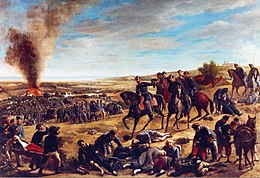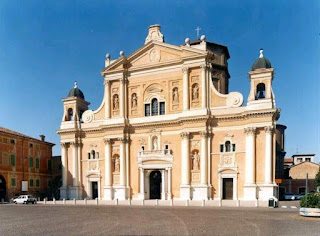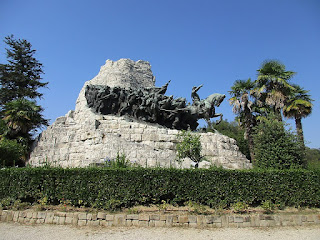NEW - Chiara Iezzi - singer and actress
One half of Paola e Chiara
The actress and singer Chiara Iezzi, who with sister Paola forms half of the top-selling Paola e Chiara pop duo, was born on this day in 1973 in Milan. The sisters performed together for seven years between 1996 and 2013, selling more than five million records, before breaking up, Chiara deciding to focus increasingly on acting and enjoying some success in the United States. The duo were reunited in 2023, when they took part in the Sanremo Music Festival for the sixth time, having made their debut at the celebrated Italian song contest 26 years earlier. Interested in music, acting and fashion since she was in her teens, Chiara graduated in fashion design, simultaneously taking acting lessons, but it was music that initially provided her with a career. After seeing her perform in jazz and funk groups, in 1994 the record producer and television presenter Claudio Cecchetto hired her together with Paola to join singer Max Pezzali as backing vocalists in a group called 883, who were popular in Milan in the 1990s. Two years later, the sisters began to perform as Paola e Chiara, signing a recording contract with Sony Music Italia. Read more…
_______________________________________
Simone Di Pasquale – dancer
Ballroom talent has been springboard for business success
Ballroom dancer and television celebrity Simone Di Pasquale was born on this day in 1978. In 2005, he became a household name after he started to appear regularly on Italian television in Ballando con le Stelle - the equivalent of the US show Dancing with the Stars and Britain’s Strictly Come Dancing. The show, presented by Milly Carlucci, was broadcast every Saturday evening on the tv channel Rai Uno. Pasquale has also appeared in numerous other television programmes, on stage in musical theatre and as an actor in a television drama. Born in Rome, Di Pasquale learnt ballroom dancing at a young age and took part in competitions. In 2000 he paired up with the dancer Natalia Titova, who also later became a celebrity because of Ballando con le Stelle. The couple were engaged from 1998 to 2005. They took first place in the competition Rising Stars UK in 2004. In the first season of Ballando con le Stelle, Di Pasquale partnered the Italian actress Hoara Borselli and the couple won the competition. He has taken part in each successive series since. Di Pasquale has appeared as a guest on numerous programmes on Italian television. Read more…
______________________________________
Franco Moschino - fashion designer
Made clothes with sense of humour
The fashion designer Franco Moschino, founder of the Moschino fashion label, was born on this day in 1950 in Abbiategrasso, a town about 24km (15 miles) southwest of Milan. Moschino became famous for his innovative and irreverent designs, which injected humour into high fashion. For example, he created a miniskirt in quilted denim with plastic fried eggs decorating the hemline, a jacket studded with bottle tops and a suit covered with cutlery. He designed a dress that resembled a shopping bag and a ball gown made from black plastic bin bags. Other designs carried messages mocking his own industry, such as a jacket with the motif ‘Waist of Money’ printed round the waistband, another in cashmere with ‘Expensive Jacket’ emblazoned across the back and a shirt with the words ‘I’m Full of Shirt’. Moschino’s first collections focussed on casual clothes and jeans, but he eventually branched out into lingerie, eveningwear, shoes, menswear and perfumes. As a young man, Moschino was encouraged to believe that his destiny lay in taking over his father’s iron foundry but his only interest in the plant lay in the layers of dust that clung to the walls, in which he would make drawings. Read more…
_____________________________________
Mirella Freni – opera singer
Good advice from Gigli helped soprano have long career
Singer Mirella Freni was born Mirella Fregni on this day in 1935 in Modena in Emilia-Romagna. Freni’s grandmother, Valentina Bartolomasi, had been a leading soprano in Italy from 1910 until 1927, specialising in Wagner roles. By coincidence, her mother worked alongside the mother of tenor Luciano Pavarotti in a tobacco factory in Modena. Freni was obviously musically gifted and sang an opera aria in a radio competition when she was just ten years old. One of the judges was the tenor Beniamino Gigli, who advised her to give up singing until she was older to protect her voice. Freni took his advice and resumed singing when she was 17, making her operatic debut at the Teatro Municipale in Modena at the age of 20 in Bizet’s Carmen. Her international debut came at Glyndebourne in Franco Zeffirelli’s staging of Gaetano Donizetti’s L’elisir d’amore. In the 1960 season at Glyndebourne she sang comic roles from Mozart’s Le Nozze di Figaro and Don Giovanni. Freni made her Covent Garden debut in 1961, her La Scala debut in 1963 and her Metropolitan Opera debut in 1965. She started singing the heavier Verdi roles in the 1970s. Read more…
______________________________________
Italy's appeal for help with Leaning Tower
Fears of collapse prompted summit of engineers
The Italian government finally admitted that it needed help to save the Leaning Tower of Pisa from collapsing on this day in 1964. There had been numerous attempts to arrest the movement of the tower, which had begun to tilt five years after construction began in 1173. One side of the tower started to sink after engineers added a second floor in 1178, when the mistake of setting a foundation just three metres deep in weak, unstable soil became clear. Construction was halted. In fact, in part because of a series of military conflicts, it did not resume for 100 years. Additions were made to the building over the next 100 years, culminating in the completion of the bell chamber in 1372. Nothing more was done until the 19th century, when an ill-considered plan to dig a path around the base in 1838 resulted in a new increase in the tilt. Ironically, the tower might have been deliberately destroyed in the Second World War when advancing American soldiers were ordered to blow up any tall building that might have been used by German snipers, regardless of its historical importance. Thankfully, a German withdrawal before the Americans reached Pisa made it unnecessary. Read more…
____________________________________
Book of the Day: Italian Cultural Studies: An Introduction, edited by David Forgacs and Robert Lumley
An illustrated introduction to the study of modern Italian culture containing 19 chapters by specialists in the field of language, politics, religious, ethnic, and gender identities, the mass media, cultural policy, and stars. Adopting a unique and accessible interdisciplinary focus, Italian Cultural Studies: An Introduction presents a variety of new perspectives on modern Italian culture. Each of the four parts explore diverse aspects of culture in Italy. 'Geographies' questions received notions of the Italian nation, the family, the 'South' and corruption; it also looks at anthropological approaches to culture and at Italy's linguistic pluralism. 'Identities' examines gender, religion, politics, and ethnicity as a means with which people define themselves and others. 'Media' explores the press, literature, television, and cinema. 'Culture and Society' brings together historical analyses of cultural policy, stars and style, and popular music. Each part is followed by sample analyses of visual materials and includes guidance on further reading. A chronology of political and cultural events since 1900 is also provided. Italian Cultural Studies: An Introduction is intended for students, teachers, and general readers of modern Italian culture.David Forgacs holds the Guido and Mariuccia Zerilli-Marimò Chair of Contemporary Italian Studies at New York University. He has written extensively about the history of Italian culture, politics and the cinema. Robert Lumley is emeritus professor of arts and humanities at University College London (UCL).




.jpg)




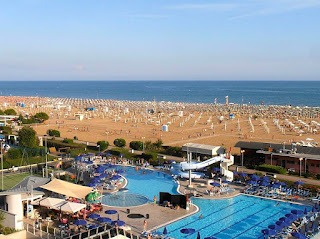
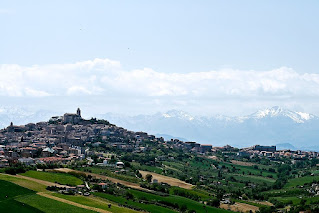
.jpg)




.jpg)






.jpg)
.jpg)
.jpg)

.jpg)



.jpg)
.jpg)




